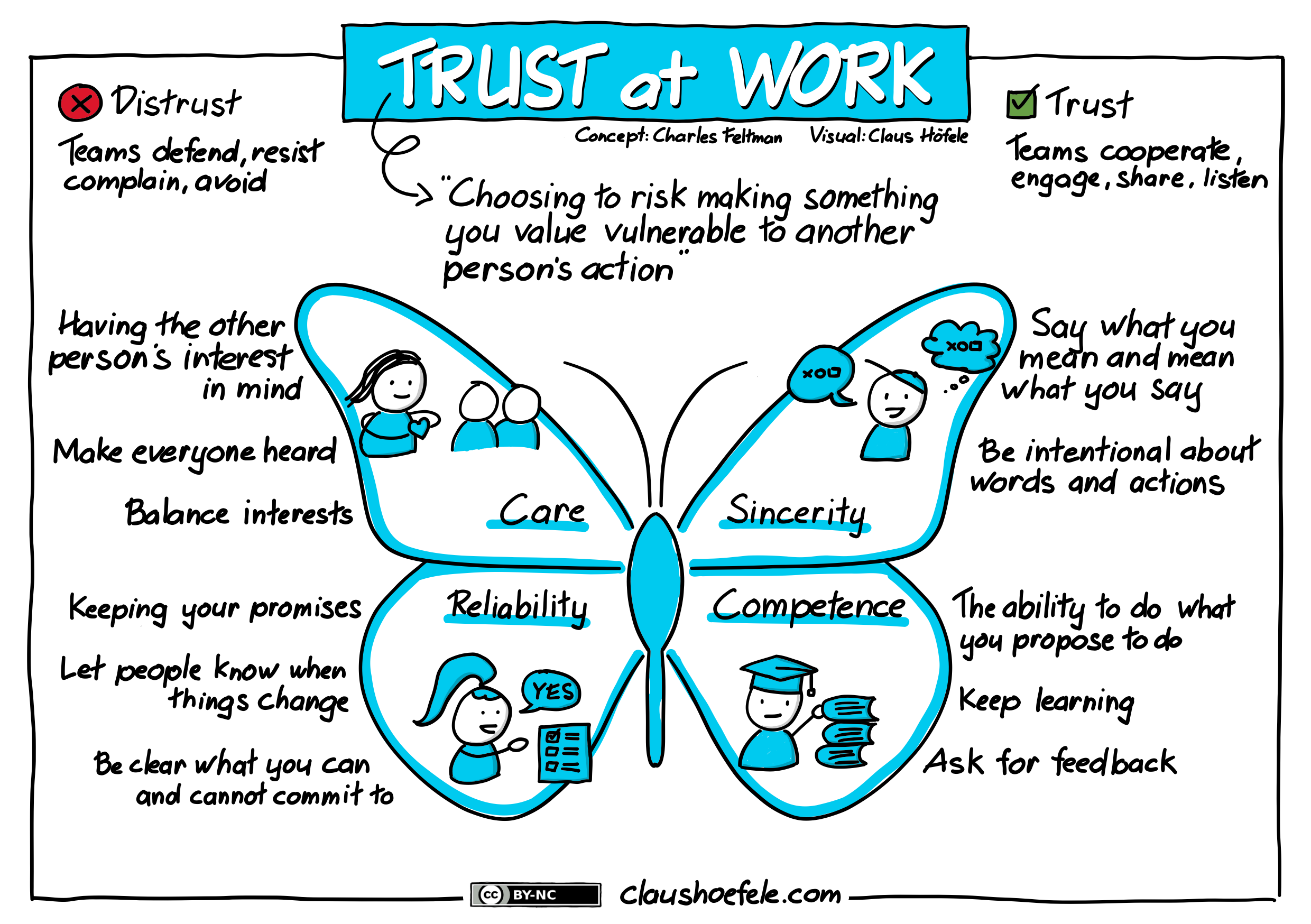Trust at Work ✍🏻 Drawn to Leadership
The Four Skills to Master the Foundation of Collaboration

On a rare visit to Germany in 1987, the peloton of the Tour de France passed through my home village near Baden-Baden on its way up the Black Forest roads. I'm not much of a sports fan, but cycling has always fascinated me. I remember coming home from school early to watch the end of the day's race.
Between 1999 and 2005, the rivalry between Lance Armstrong and Jan Ullrich for the yellow jersey was at its height. It was also a rare sight to see a German competing for the top spot in the world’s most prestigious cycling race!
Cycling and I - lifelong fans?
Doping didn't bother me at that time. Sure, there were always rumours and accusations, but it seemed like it would take an intricate network of conspirators to make it work. Well - it looks like that’s exactly what happened.
In January 2013, Lance Armstrong confessed to using performance-enhancing drugs for much of his career, including all seven of his Tour victories. If you go to Wikipedia and look at the list of Tour de France winners from that period, you’ll find a blank space labelled "No winner".
“Trust starts with truth and ends with truth.” (Santosh Kalwar)
I can’t be bothered to watch cycling any more because my trust in the sport has been ruined for good.
You can easily tell when trust has been broken. But what exactly is trust?
In this issue, we look at a framework for trust, the four skills needed to master trust, and how leaders can apply these concepts in the workplace to foster better collaboration.
Subscribe to Drawn to Leadership to receive email notifications about new issues.
Trust in the Work Environment
Have you worked in teams where people withheld important information, conflicts led to blame and change was resisted? People in these teams have decided that it’s not safe to speak up and that other people are a threat to them.
“The disaster of distrust in the workplace is that the strategies people use to protect themselves inevitably get in the way of their ability to effectively work with others.” (Charles Feltman)
In contrast, trusting teams work well together, have engaging discussions even when they disagree, and are willing to challenge themselves and others. You could say: trust is the basis for working together.
Trust as a Competence: The Four Skills to Master
In his book “The Thin Book of Trust”, Charles Feltman argues that trust can be learned and developed. He defines trust as:
“Choosing to risk making something you value vulnerable to another person’s action”
However, this definition alone is not enough to improve trust in an organisation. Improving trust requires identifying and addressing the specific issues that undermine trust. Breaking down trust into its component parts helps to transform the concept into a framework for action.
The framework consists of four skills:
- Care: Having the other person’s interest in mind
- Sincerity: Saying what you mean and mean what you say
- Reliability: Keeping your promises
- Competence: The ability to do what you propose to do
By identifying and developing these four skills, individuals and organizations can work to build and maintain trust in a more deliberate and structured way.
For example, focusing on caring can help individuals to build stronger relationships and demonstrate concern for the well-being of others, while improving competence can enhance skills and knowledge and increase confidence in the ability to deliver quality work. Similarly, prioritizing sincerity and reliability can help to build credibility and establish a reputation for honesty and dependability.
How to Improve Trust at Work
Take the First Steps Towards Trust with a Personal Histories Exercise
The book “The Five Dysfunctions of a Team” identifies the lack of trust as the first issue to be addressed in order to build a high performing team. Author Patrick Lencioni suggests that team members answer a few questions about themselves as a low-risk approach to building empathy and finding common ground.
For example, in an introductory conversation with new and existing employees, I ask people to share their name, how long they have been with the company, their favourite company product, and then pass it on to the next person with a question of their choice (about the next person’s hobbies, favourite books, best holiday tips, etc.).
As the facilitator, demonstrate the format by being the first to answer the questions (this will set the tone for the type of questions to ask). In my experience, questions don't have to go very deep to lead to interesting discoveries of shared experiences and new aspects of people's personalities.
Achieve Alignment with a Team Charter
A team charter is a document that clarifies a team’s mission, behaviours and values. When team members know what is expected of them and how they should interact, it builds trust by creating a safe and predictable environment. Alex Ivanov and Mitya Voloshchuk have turned this idea into a template and workshop format called the Team Canvas.
Depending on your needs, you can use a basic or extended version of the Team Canvas. After a kick-off, the basic version consists of 5 sections (Goals, Roles & Skills, Purpose, Values and Rules & Activities) that you discuss with your team. At the end of the workshop, ask each participant to share the key learning from the session.
The Team Canvas website has more detailed instructions and a ready-to-use Miro template for online workshops. I recommend allowing enough time to discuss each section - discussions are often the most valuable part of such an exercise.
More of this? Subscribe to Drawn to Leadership to receive email notifications about new issues.